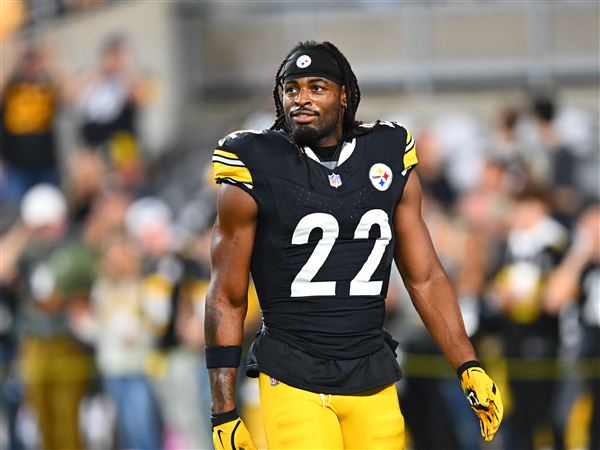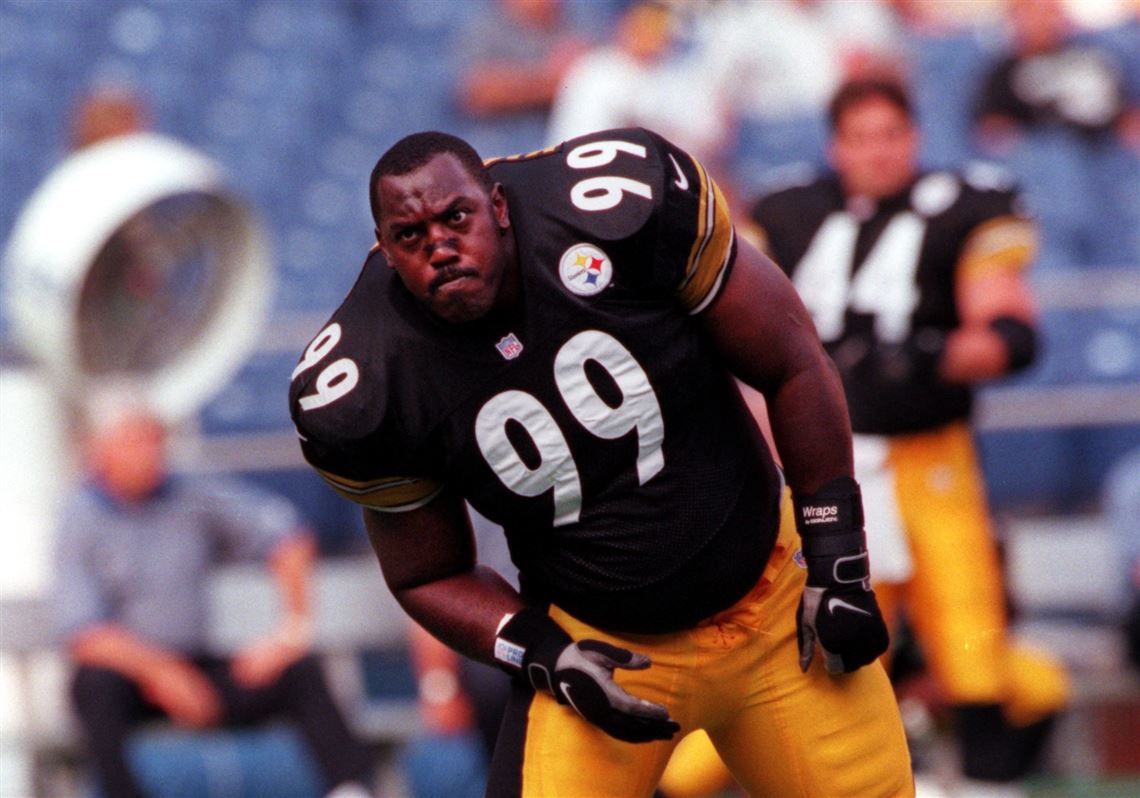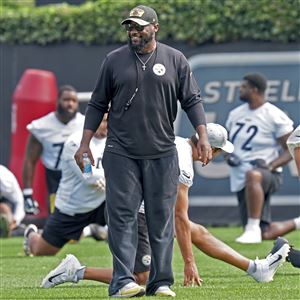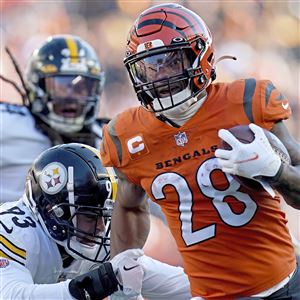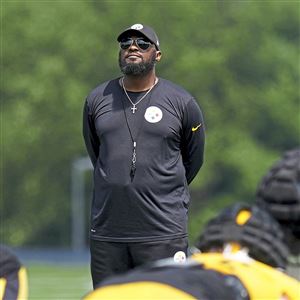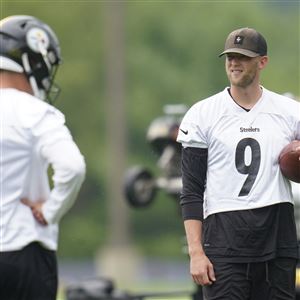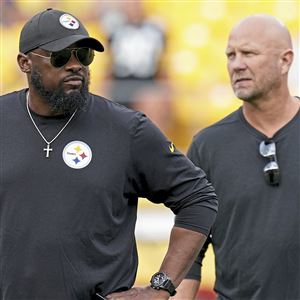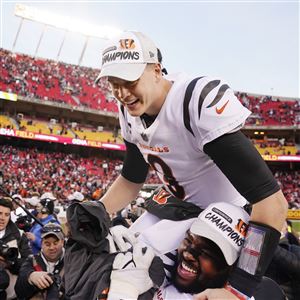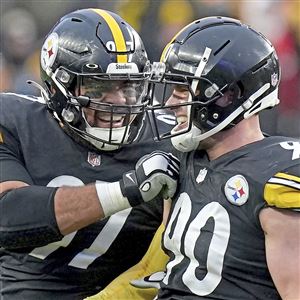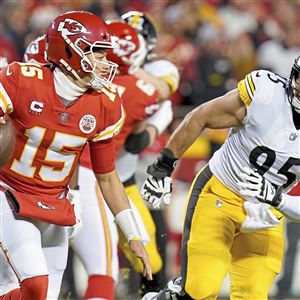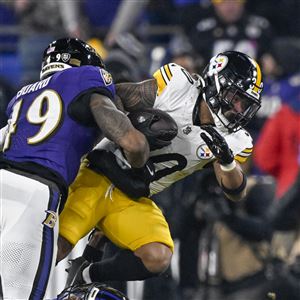Thirty years ago, the Steelers selected Levon Kirkland in the second round of the NFL draft. It didn’t take long for Kirkland to develop into one of the best inside linebackers in the league. He became a first-team All-Pro, played in two Pros Bowls and was the best defensive player on the field in Super Bowl XXX, when he spearheaded an effort that held Cowboys star running back Emmitt Smith to 49 yards on 18 carries.
But how would Kirkland fit in today’s NFL? If he came out of college in 2022 standing 6-foot-1 and weighing 275 pounds, there would be coaches suggesting a position switch to defensive line. Or he’d be relegated to a one- or two-down, run-stopping linebacker.
Kirkland might have resembled a nose guard, but he was a sneaky athletic and versatile player who patrolled the middle of the field as well as any player during the mid-1990s.
“I would have adapted. If you play in the NFL in any era, you can play the game today,” Kirkland said over the phone from his South Carolina home. “Playing in the NFL is a mentality. The players who made it in the NFL would have adapted. I was always encouraged to lose weight. I think I would have played linebacker, and I think I would have done it very well.”
The inside linebacker position has changed perhaps more than any other position in football over the past three decades. Once NFL offensive coordinators started using spread offenses, defensive coaches sought smaller players for the middle that could run and cover. Now the trend is to simply find the freakiest athlete that possesses height, speed and toughness to man the middle of the field.
Dallas linebacker Micah Parsons, the reigning NFL Defensive Rookie of the Year, is the new prototype. At 6-3, 245 pounds, Parsons runs the 40-yard dash in 4.36 seconds and possesses a 79-inch wingspan.
There was much debate about how Parsons’ size and athleticism would be utilized in the NFL. Some scouts believed he would excel as an edge rusher — and the Cowboys deployed him there some last season — but his versatility as an inside linebacker is coveted because NFL defenses are always adapting to the annual changes to offensive schemes.
“It’s more about the ever-changing and offensive fluidity of football,” said Brian Flores, a senior defensive assistant for the Steelers and one of the foremost authorities on linebacker play in the NFL. “I would say three decades ago, there were a lot of fullbacks playing. That was a different style of play. With the spread play that has come into play in the last 10-15 years, spreading the field, forcing defenses to defend the width of the field and vertical parts of the field, getting backers out in space more, it has changed things significantly. The jet motion has changed things significantly.
“I think versatility on offense means you have to have versatility on defense. That means guys who can rush, guys who can cover, guys who can run. It’s really become a thinking man’s game from that standpoint — the volume of things that has to be dealt with. Offensive coordinators are creating eye candy, forcing linebackers to make those adjustments. A lot of times they’re banking on getting a matchup or coverage adjustment that may or may not be made that can put them in position to get some significant yardage.”
The Steelers have struggled to find a replacement for Ryan Shazier in the middle of their defense since his career-ending spinal cord injury in 2017. In 2019, then-general manager Kevin Colbert traded up 10 spots to select Devin Bush with the No. 10 overall pick in the draft.
Bush has struggled to live up to the expectations of being the coveted three-down inside linebacker they so desperately needed. They declined his fifth-year option in the spring, and he’s playing out the final year of his rookie contract.
Before Bush’s option was declined, the Steelers signed former Jaguars linebacker Myles Jack to a two-year, $16 million deal. Jack, who is 6-1, 245, was used as a comp for Parsons during the 2021 pre-draft process because of the similarities in body type and athleticism. The Steelers are now hoping Jack can put an end to the four-year search for their next three-down linebacker.
“It’s definitely never the same every year,” Jack said. “Offenses are figuring out new and different ways to attack you or put you at a disadvantage. It’s a pretty tough position. You have to be able to play the run and the pass. You’re responsible for a lot of things. It’s not an easy job.”
Kirkland believes the answer might be in scouting. He played alongside Chad Brown on those 1990s Steelers defenses. Both played outside linebacker in college. They had to learn how to play inside linebacker, but their athleticism and intellect translated perfectly into the NFL game.
Kirkland said a player’s makeup is just as important as their athleticism when trying to project their success in the NFL. The best NFL linebackers are able to read offensive tendencies, process the information and communicate that to their teammates on the first and third levels of the defense.
“It’s such a hard and underappreciated position right now,” said Kirkland, who keeps a close eye on the Steelers after coaching in the high school and college ranks in recent years. “You have to be able to do so many different things. You have to be able to stop the run. You have to be able to cover. You have to blitz. It’s just hard to find a guy that can do all of those things.”
Flores, who came to the Steelers in the spring after three seasons as Miami’s head coach, shares Kirkland’s belief that identifying player makeup is a big part of the equation when it comes to scouting linebackers. Athleticism and versatility are musts, but there are other things that can’t be measured at the combine or pro days that are more important.
“Projections are part of the scouting game,” Flores said. “When you’re talking about a guy who has never played the position, trying to project him from safety to a linebacker or an edge guy to an outside linebacker, or an edge guy to an inside linebacker, or a defensive tackle to a linebacker ... Tedy Bruschi was a defensive tackle in college and converted to linebacker. He was a very good one.
“Those projections, from a scouting standpoint, that’s about the person. Do they have the intelligence? Do they have the intangibles to make the jump, to change positions, to develop into that projection? I think that’s always more about the person and the intangibles. If you find the right guy and you hit, it will help your defense. You’re doing it so you can help the team play against these versatile offenses. You’ll have another versatile player on the field who can do what you’re projecting him to do, but you also know he has his original position. You’re creating versatility that way.”
Ray Fittipaldo: rfittipaldo@post-gazette.com and Twitter @rayfitt1.
First Published: September 10, 2022, 9:30 a.m.



